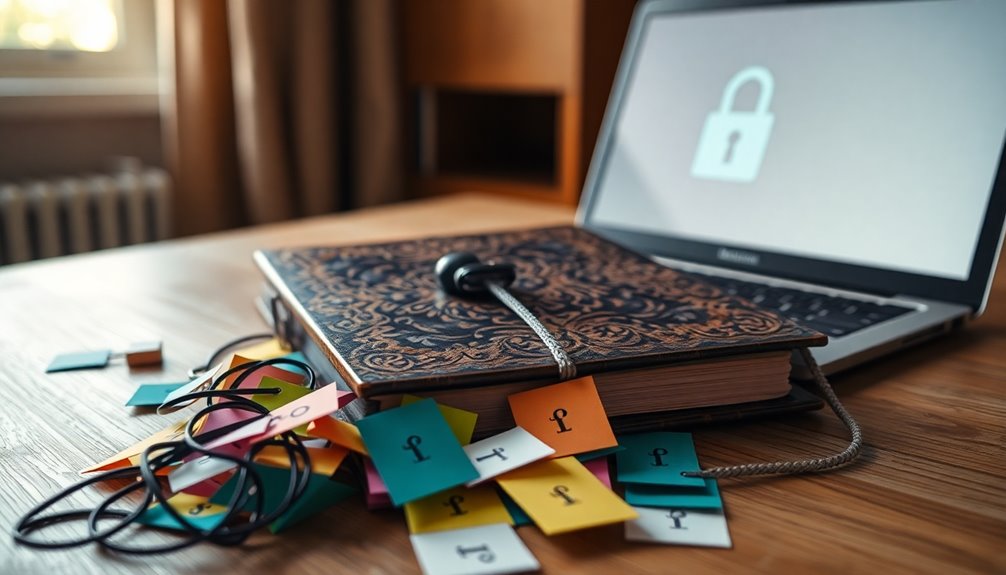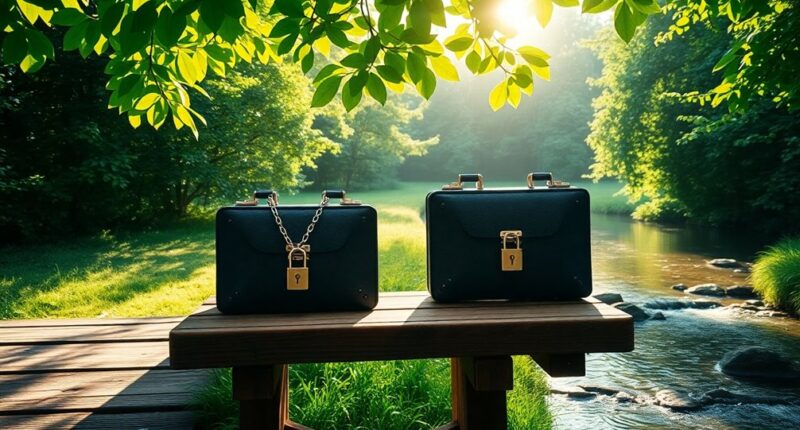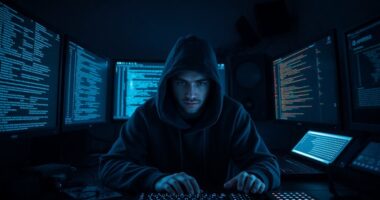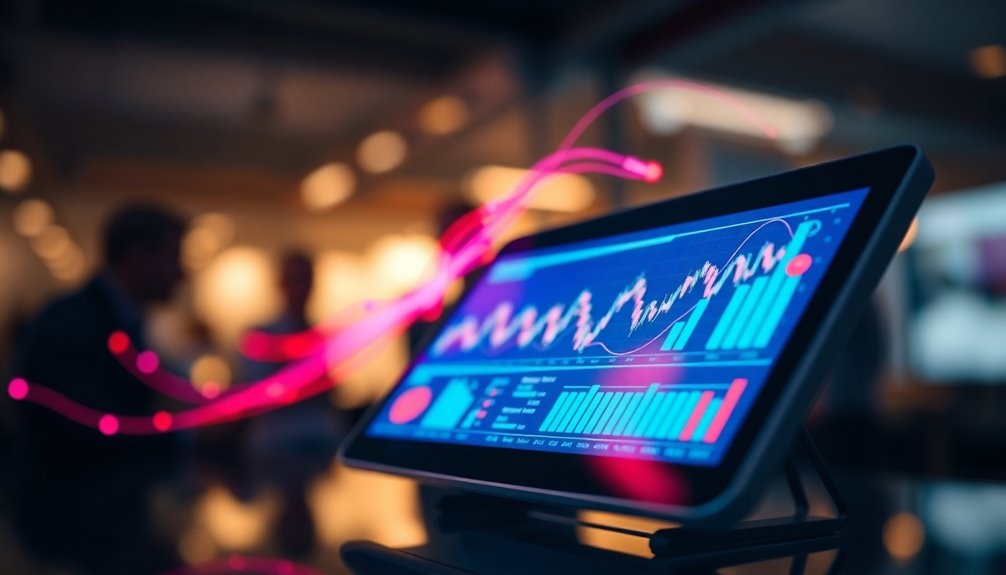End-to-end encryption means your messages are secure from start to finish. When you send a message, it gets encrypted on your device before it travels through the network, ensuring that only you and the person you're communicating with can unlock and read it. No one, not even the service provider, can access the content. This method protects your conversations against eavesdroppers and hackers. It's like having a private conversation in a locked room. Curious about the different messaging apps that use this feature or the potential drawbacks? There's much more to explore on how this technology affects your privacy.
Key Takeaways
- End-to-End Encryption (E2EE) ensures that only the sender and recipient can read the transmitted messages, keeping them secure from third parties.
- Data is encrypted on the sender's device and remains unreadable during transmission until it reaches the intended recipient.
- It uses a public key for encryption and a private key for decryption, safeguarding communication from unauthorized access.
- E2EE protects against interception, ensuring that even if a network is compromised, the data remains secure.
- This encryption method enhances privacy and integrity, making it essential for compliance with data protection regulations.
Core Principles of Encryption

When you dive into the world of encryption, you'll quickly encounter its core principles, which serve as the foundation for securing information.
At its core, an encryption algorithm transforms plaintext into ciphertext through substitutions and transformations. Every operation depends on three key components: the plaintext, the algorithm itself, and a secret key.
The type of algorithm you choose matters; symmetric algorithms use a single key, while asymmetric ones utilize two keys.
Encryption can involve substitution, rearrangement, or processing data in blocks or streams. Effective key management practices—like generation, distribution, and rotation—ensure your keys remain secure. Additionally, robust key management ensures confidentiality, availability, and cryptographic strength of keys, which is essential for maintaining the overall security of the encryption process.
Defining End-To-End Encryption

End-to-end encryption (E2EE) is a powerful method that ensures your data remains private from the moment you create it until it reaches the intended recipient.
It works by encrypting your data on your device before it's sent over the network. This encrypted data stays secure and unreadable to anyone, including service providers, until it reaches the recipient's device.
Only the recipient can decrypt the message using a private key that remains secret. E2EE employs asymmetric cryptography, where a publicly available key encrypts the data, while a private key decrypts it. Additionally, E2EE prevents third-party access during transmission, ensuring only the intended recipient can read the messages.
By incorporating endpoint authentication, E2EE also protects against man-in-the-middle attacks, providing robust security against unauthorized access and data breaches.
This way, your communication stays confidential and secure.
Data Travels Securely Between Devices

As your data travels from one device to another, end-to-end encryption ensures it remains secure and unreadable to anyone but the intended recipient.
Before transmission, your message is encrypted on the sender's device, converting readable plaintext into unreadable ciphertext using a unique pair of keys. The public key, stored in the cloud, facilitates encryption, while the private key remains solely on the recipient's device for decryption.
Throughout its journey, the encrypted data stays protected from interception by third parties, including internet providers. No intermediary can access your message, ensuring data security from start to finish. Additionally, by employing multiple layers of security, E2EE provides a robust defense against potential breaches, further enhancing the privacy of your communications.
Even if the network is compromised, unauthorized parties can't read your messages, keeping your sensitive information safe during transmission.
Pros and Cons Overview

Understanding the secure transmission of data sets the stage for recognizing the pros and cons of end-to-end encryption.
On the plus side, it protects your privacy by keeping communications safe from hackers and unauthorized viewers, ensuring the integrity of your data during transmission. This encryption method also safeguards against unauthorized access, as only intended recipients can decrypt messages. It's crucial for complying with strict data regulations. Furthermore, it is particularly beneficial for highly sensitive data exchanges, such as mergers and acquisitions.
However, managing encryption keys can be complex and may lead to irreversible data loss if not handled properly.
Additionally, law enforcement might struggle to access encrypted evidence during investigations, raising public safety concerns.
Finally, integrating various encryption protocols can complicate communication between systems, posing technical challenges.
Messaging Apps: Signal vs. WhatsApp

When you're choosing a messaging app, the debate between Signal and WhatsApp often centers on security and privacy features.
Signal prioritizes your privacy by collecting minimal data and sharing none with third parties. In contrast, WhatsApp collects user data, including phone numbers and IP addresses, and shares it with Meta.
Both apps use the Signal Protocol for end-to-end encryption, ensuring only you and the recipient can read messages. However, WhatsApp's metadata isn't protected, while Signal offers features like Sealed Sender for added privacy. Furthermore, WhatsApp employs key transparency to enhance the verification of secure connections, promoting trust in its encryption practices.
WhatsApp provides more customizable features, but Signal's focus on security tools, like self-destructing messages, makes it a solid choice for privacy-conscious users.
Ultimately, your needs will determine which app suits you best.
Vulnerabilities in Implementation

Despite the robust features of end-to-end encryption (E2EE), vulnerabilities can arise during implementation that may undermine its effectiveness.
If your device is compromised, attackers can access decrypted data and keys stored on it. Malware and keyloggers can capture sensitive information, while unsecured storage leaves your decrypted data exposed. Effective key management is crucial, yet complexity in key generation and distribution can lead to vulnerabilities. Additionally, metadata remains unencrypted, revealing sender and recipient details, which can be exploited. As technology advances, even quantum computing poses potential threats to current encryption methods.
Furthermore, the effectiveness of E2EE can be significantly reduced if users do not implement strong passwords. Ultimately, understanding these vulnerabilities is essential for ensuring the security of your communications and protecting your private information.
Emerging Encryption Protocols

As vulnerabilities in current encryption methods become more apparent, especially in the face of quantum computing advancements, emerging encryption protocols are stepping up to address these challenges. Quantum computers can break traditional techniques like RSA and ECC, putting sectors such as finance and healthcare at risk. The National Institute of Standards and Technology (NIST) is actively testing and standardizing post-quantum cryptography (PQC) algorithms to guide this transition. Adoption is already underway in risk-aware industries, focusing on critical data protection. By implementing hybrid solutions that combine PQC with existing methods, organizations can reduce the risk of harvest-now-decrypt-later attacks. The push for quantum-safe cryptography is crucial as businesses and governments prioritize security against evolving threats, especially as quantum computers threaten current encryption methods.
Use Strong, Unique Passwords

Using strong, unique passwords is essential for safeguarding your online accounts and personal information. They help prevent password-related attacks like credential stuffing and account takeovers, protecting you from identity theft and financial loss. A strong password should be at least 16 characters long, mixing uppercase and lowercase letters, numbers, and special characters. Avoid using common phrases or easily guessable information.
Consider using a password manager to generate and store these complex passwords securely. This tool not only simplifies managing multiple passwords but also enhances security through features like encryption. Additionally, always enable two-factor authentication and regularly update your passwords, especially after any data breaches, to further protect your accounts from cybercriminals. Strong passwords are crucial for maintaining digital security and reducing risks of identity theft and financial loss.
Frequently Asked Questions
Can End-To-End Encryption Protect Against Government Surveillance?
Yes, end-to-end encryption can protect you against government surveillance.
By ensuring that only you and the intended recipient can access your messages, it keeps your communications private. Even if someone intercepts the data, it remains encrypted and unreadable without the decryption key.
This means unauthorized parties, including government agencies, can't decipher your conversations.
How Does End-To-End Encryption Impact App Performance?
Imagine your messages as precious jewels locked in a vault, accessible only to you and your recipient.
However, this security comes at a cost. When you send or receive these messages, your device works hard to encrypt and decrypt them, which can slow things down.
Frequent updates in collaborative apps might feel like a traffic jam, causing delays.
Balancing security with speed is crucial for smooth communication in today's fast-paced digital world.
Are There Any Legal Implications for Using End-To-End Encryption?
When you use end-to-end encryption, you might face several legal implications.
Laws like the EARN IT Act could expose platforms to increased liability if they're perceived as not preventing harmful content. This might pressure providers to weaken encryption, potentially compromising your privacy.
Additionally, regulators may push for scanning technologies that conflict with encryption's purpose, affecting how securely your data is communicated and stored.
Staying informed about these laws is crucial for your digital safety.
Is End-To-End Encryption Applicable to All Types of Data?
Yes, end-to-end encryption applies to various types of data.
Whether you're sending text messages, sharing files, or making voice and video calls, encryption ensures that only you and the intended recipient can access the content.
It also secures data stored on devices or in the cloud, preventing unauthorized access.
Can End-To-End Encryption Be Bypassed or Hacked?
Think of E2EE like a modern-day knight guarding a castle.
Sadly, even the strongest defenses can be compromised. Yes, E2EE can be bypassed or hacked. If an endpoint's security falters, hackers can access decrypted data.
Vulnerabilities like weak key management or flaws in encryption protocols can leave your data exposed.
Conclusion
In a world where privacy feels like a fleeting dream, embracing end-to-end encryption is like wrapping your secrets in a cozy blanket. It's your shield against prying eyes, ensuring your messages whisper only to their intended ears. While no system is foolproof, choosing secure methods lets you rest a little easier. So, as you navigate the digital landscape, remember: your words deserve a safe haven, and with the right tools, you can create that sanctuary.









